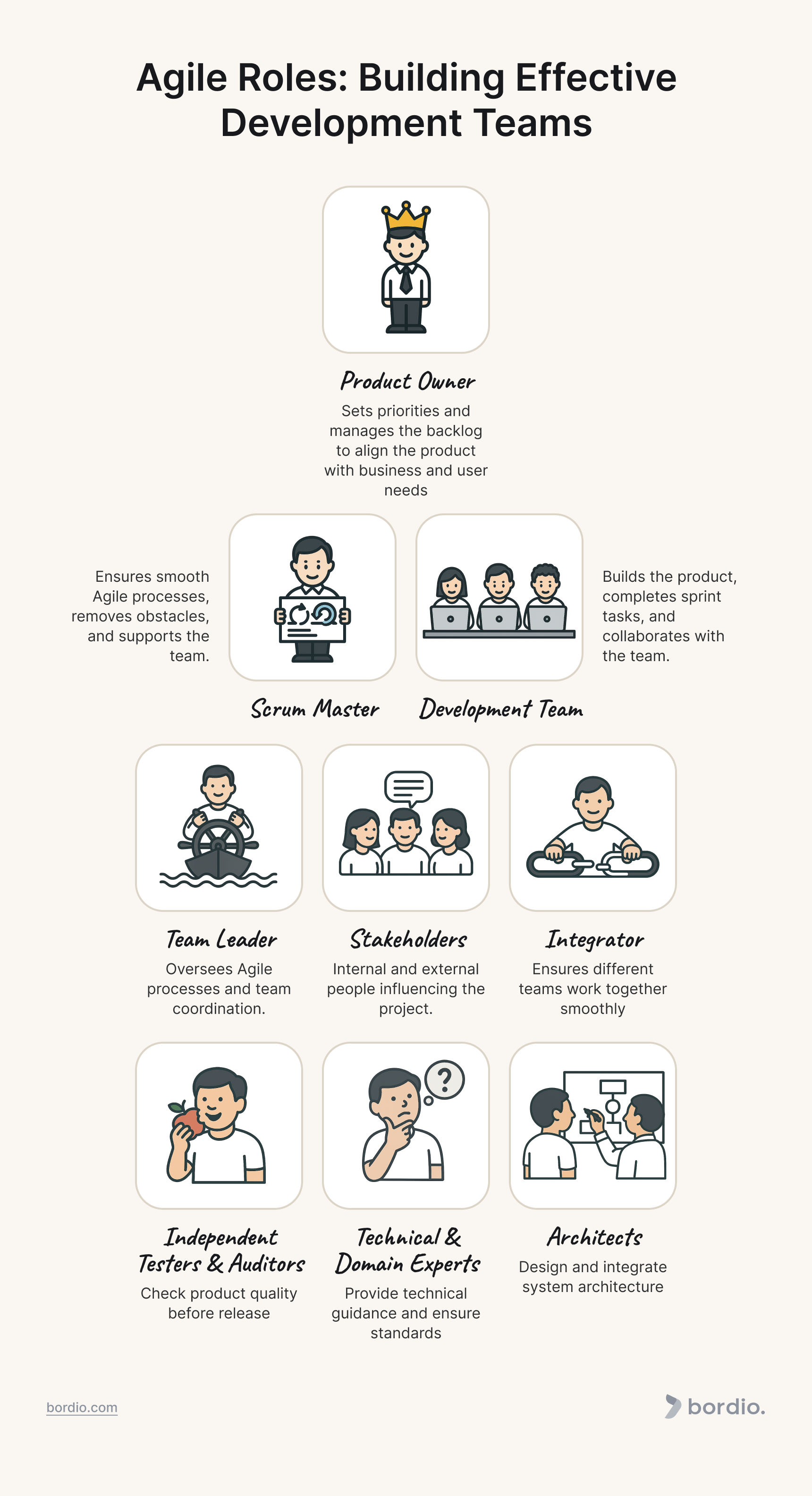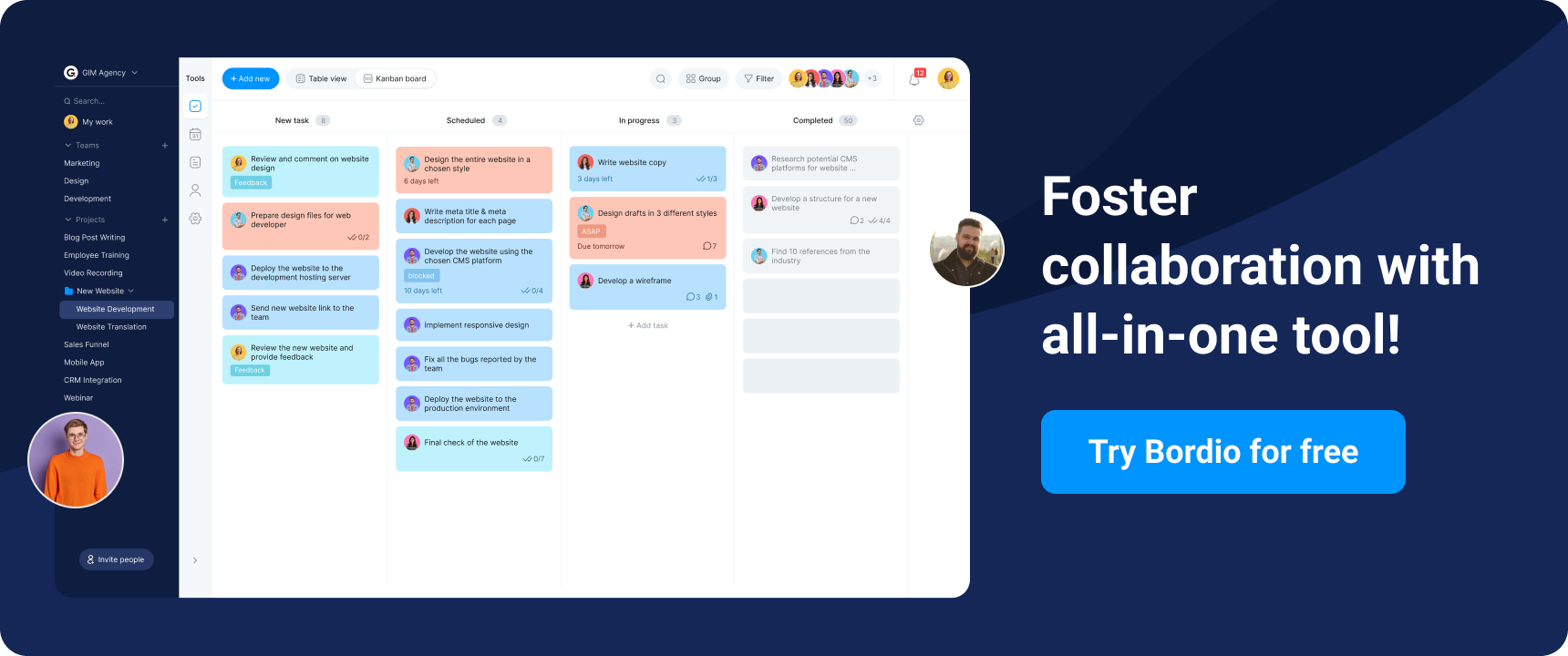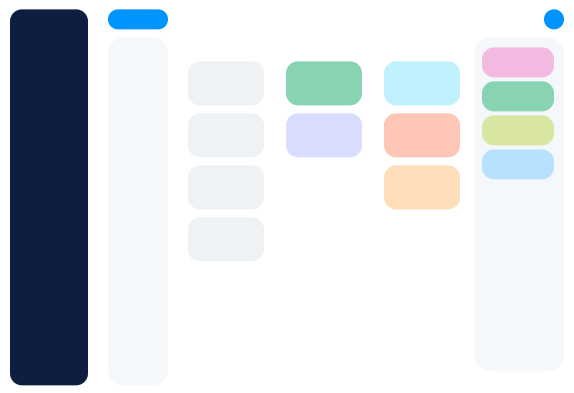Agile methodology is one of the most widely used project management techniques. It emphasizes adaptability and quick reaction to changes. Agile divides projects into manageable sprint stages, allowing teams to work iteratively compared to older techniques. This makes the methodology popular in engineering and business teams, software development, and other areas where adaptability and the ability to make changes quickly are required. This article examines Agile teams’ key roles and responsibilities to understand how they affect project success.
What is an Agile team?
Agile teams are specialists from different disciplines working together to achieve common goals. They are more effective than traditional teams because of self-organization and continuous improvement principles. These groups work to foster an atmosphere of cooperation in which each person may make a valuable contribution. Terms like “continuous improvement,” which describes the ongoing effort to raise the caliber of the job, and “self-organization,” which describes the team’s capacity for self-management, are crucial. Agile consists of the following elements that make it stand out:
Sprints
Sprint reviews are brief periods where products are conceived, created, evaluated, and produced. They are goals broken down within the projects.
Daily standup
The daily standup focuses on daily goals and starts by discussing the work achieved so far, what the team aims to work on, and any Q&As the team might have.
Stream-lined reviews
Built-in safeguards ensure consistent check-ins and smooth operation. Reviews ensure that the work’s quality is maintained and errors are minimized. After completing tasks and sprints, the work is reviewed by peers and management.
Tip: You can learn more about Agile ceremonies in our latest article!
Key roles in Agile teams
An agile team has several key roles for core scrum team members. These roles determine how the team works and interacts with each other, which is critical to the successful implementation of Agile processes. Understanding these roles helps to avoid confusion and improve teamwork effectiveness. What key roles do we need for a regular Agile project?
Product owner
The product owner ensures that the product’s goals align with the company’s and its users’ goals. They are the primary person who set priorities, manage the backlog, and interact with all stakeholders. To guarantee that the team concentrates on the most valuable tasks, they must comprehend customer wants and corporate goals.
The product owner continually ensures the team works on the items that deliver the most value and regularly gathers customer and business feedback. To perform the best in their key responsibilities, product owners should have several skills:
- Strategic thinking: The Product Owner must understand the business goals and see the big picture. It allows them to set the right priorities and shape the product vision.
- Communication: The ability to effectively communicate with customers, the team, and other stakeholders to obtain the necessary information and ensure precise requirements.
- Accountability: The Product Owner ensures the team works on the items that deliver the most value.
- Decisiveness: Requires making essential decisions about product priorities and strategy, sometimes in the face of uncertainty.
- Adaptability: Ability to quickly respond to changes in requirements and adjust the course of product development.
Development team
The second role is a development team — the experts responsible for developing the product, which includes developers, testers, and other professionals. They are responsible for ensuring the product is technically implemented and finishing jobs from the backlog. Success requires practical cooperation and communication; you can implement a team task planner to improve your development team’s cooperation. Apart from communication skills, they will need more:
- Technical Skills: Developers must have extensive technical knowledge and skills to deliver the project efficiently, and a task planner must support them in organizing their workload.
- Team spirit: Team members must collaborate effectively, help each other, and be willing to cooperate to achieve common goals.
- Accountability: Each team member is responsible for their part of the work and the final result of the entire sprint.
- Flexibility: Ability to adapt to new tasks, changing project conditions, or problems that arise.
- Initiative: Team members must actively propose ideas, improvements, and problem solutions rather than complete tasks.
Scrum master
The scrum master or the Agile coach serves as the team’s coach, assisting in removing obstacles and promoting Agile procedures. They set up meetings, ensure Scrum guidelines are followed, and support the team in focusing on the work at hand. This position is essential for managing procedures efficiently and guaranteeing team productivity. Their skills:
- Organization: The scrum master must maintain the process’s structure and rhythm, organize meetings, and ensure they are carried out effectively.
- Service Leadership: The scrum master works for the team’s benefit, helping it become self-managing and productive. His leadership is about serving the team, not managing it. Empathy: The scrum master must understand the team’s needs and problems, be sensitive to their requests, and help solve the difficulties that arise.
- Conflict Management: The ability to resolve conflicts and help the team find solutions to problems without destroying the atmosphere of cooperation.
- Facilitation Skills: The scrum master must be able to lead meetings, stimulate productive discussions, and help the team find optimal solutions.
Minor roles in Agile methodology
Other roles of individual team members can be helpful for Agile teams, although they are not required in most projects. These may include independent testers, architects, and technical experts who help improve the quality of work and adapt solutions to technical standards. These roles are often used in complex projects:
Team leader
In contrast to the scrum master, who is specific to Scrum, the Team leader functions within an Agile team using Kanban methodology. They guarantee that Agile procedures are followed and promote efficient team communication.
Stakeholders
People with a stake in the project, both internal and external, are considered stakeholders. Employees and managers are internal stakeholders, whereas partners, suppliers, investors, and consumers are external stakeholders. Their advice is essential for directing the creation of new products and resolving any problems.
Integrator
Integrators manage larger projects involving multiple teams, ensuring cohesive integration of different aspects. This role is typically necessary for complex systems requiring collaboration among several teams.
Independent testers and auditors
These roles are optional and generally needed for complex projects. Independent testers and auditors review the work of the Agile team before the product is delivered, similar to an editor checking articles before publication. When both integrators and independent testers are involved, they work closely together to ensure quality assurance and prevent errors from reaching clients.
Technical and domain experts
Often brought into the team as needed, these experts guide technical decisions, ensuring the project is coherent and meets established standards. They manage technical aspects and approve solutions before deployment.
Architects
Architects help ensure that solutions fit within the enterprise structure. They facilitate architectural planning and decision-making rather than defining the project’s direction. Multiple architects may be involved in a single sub-team depending on the project’s complexity.
Best practices for implementing Agile roles
Successfully implementing Agile roles within an organization involves several best practices that ensure clarity, efficiency, and collaboration. Here are key recommendations:
Create clear role descriptions
Provide thorough job descriptions for all Agile roles, such as those of the Development team members, Product owners, and Scrum masters. Describe their duties, essential assignments, and interactions with other positions. Ensure that these descriptions are readily available to all team members, clearly showing who is accountable for what. It lessens the chance of misunderstandings and job overlap.
Utilize specialized project management tools
It helps that in Bordio, you create separate projects for each team, where you can invite team members and some guests who work on one specific project. You define their roles (e.g., Product owner, Scrum master, Developers) by asking them to add it to their names to ensure a clear structure and accountability. Then, use custom task statuses. You can create custom task statuses in Bordio to reflect different stages of development, such as “Backlog,” “In Progress,” “Testing,” and “Done.” It will allow teams to track progress in the Kanban view and simplify communication.
You can also use Bordio’s task tracker to analyze team progress, workload, and task execution efficiency. This will help identify weaknesses and areas for improvement.
Provide comprehensive training
Organize training workshops to inform team members about the responsibilities and concepts of Agile. Workshops on Agile approaches, role-specific duties, and collaborative best practices could be part of this. Consider bringing in Agile coaches or experienced practitioners to facilitate these training sessions. They can share real-life examples and address any questions or concerns.
Foster a collaborative environment
Foster a collaborative environment. Promote candid dialogue among team members. Using an online organizer for consistently planned gatherings, such as daily stand-ups, sprint planning, and retrospectives, enables communication and input exchange. Establish a setting where team members are at ease discussing concepts, difficulties, and ideas for enhancement. It encourages a culture of lifelong learning and adjustment. In Bordio, you can track feedback and suggestions for improving the team’s work. Create separate tasks for suggestions and observations so the team can discuss them and implement changes.
Emphasize self-organization
Enable groups to take responsibility for their work and decide together. To promote responsibility and involvement, kindly help them to self-organize around duties and responsibilities. Giving teams the freedom to decide how to accomplish their objectives best allows them to make necessary process adjustments based on their experiences and insights.
Set up regular reviews and retrospectives
Implement regular review sessions to evaluate project progress and the effectiveness of Agile practices. Use these meetings to get input and pinpoint areas that need work. After every sprint, have retrospectives to discuss what went well, what didn’t, and how the team can improve going forward. This promotes a culture of ongoing development.
For a retrospective stage, there are built-in features in the Bordio team tracker to schedule regular meetings. The same applies to tasks; there can be crested events (e.g., daily standups, sprint planning, and retrospectives); you give them time and place and add people you want to see. If you set Google Meets as the meeting location, a meeting call will automatically be scheduled for a specific time, and all meeting participants will receive invitations via Gmail. These will provide an opportunity to discuss the current status and identify impediments.
Align Agile roles with business goals
Make sure the efforts of Agile teams align with more general corporate goals. Use a project management board to visualize these goals and track how each team’s work helps to achieve them. Communicate business objectives regularly and explain how each team’s work helps to achieve them. Encourage multiple separate teams to focus on delivering customer value and meeting business needs, reinforcing the importance of their organizational roles.
How Agile roles ensure successful projects
Various roles work together to ensure agile projects function well and adjust to changing requirements. The product owner performs a critical role by establishing priorities and ensuring that the team concentrates on activities that yield the greatest commercial value. By advocating on behalf of the customer, they also ensure that the work is by company objectives.
To aid the team, the scrum master holds meetings and ensures that everyone abides by the Agile principles. To allow everyone to focus on their work, they also help remove any obstacles that can slow down the team and create a productive environment.
The development team must deliver the actual work. They commit to finishing specific objectives per sprint, estimate tasks, and divide complicated features into small chunks. To ensure they comprehend the requirements and have the resources to achieve them, the team works closely with the scrum master and product owner, often relying on work management software to streamline collaboration and track progress efficiently.
When combined, these positions create a strong team that can swiftly adjust to changes in project scope and client input. The team can remain adaptable thanks to the Agile approach, which makes it simpler to change tactics and priorities as required. This flexibility is essential for complicated projects since they frequently face unforeseen obstacles and adjustments.
Final Thoughts on Agile Roles
Agile roles are intended to promote efficiency, adaptability, and teamwork within a project. Each position—Product Owner, Scrum Master, and Development Team—has its duties, guaranteeing the team can work efficiently toward common goals. The Development Team concentrates on gradually producing high-quality work, the Scrum Master enables efficient procedures and eliminates roadblocks, and the Product Owner keeps the team focused on business objectives.
When these positions collaborate closely, teams can respond swiftly to changes arising from unanticipated obstacles and client input. This collaboration enables a flexible and adaptable approach to project management, guaranteeing that the group produces results while remaining aligned with the project’s changing requirements.










